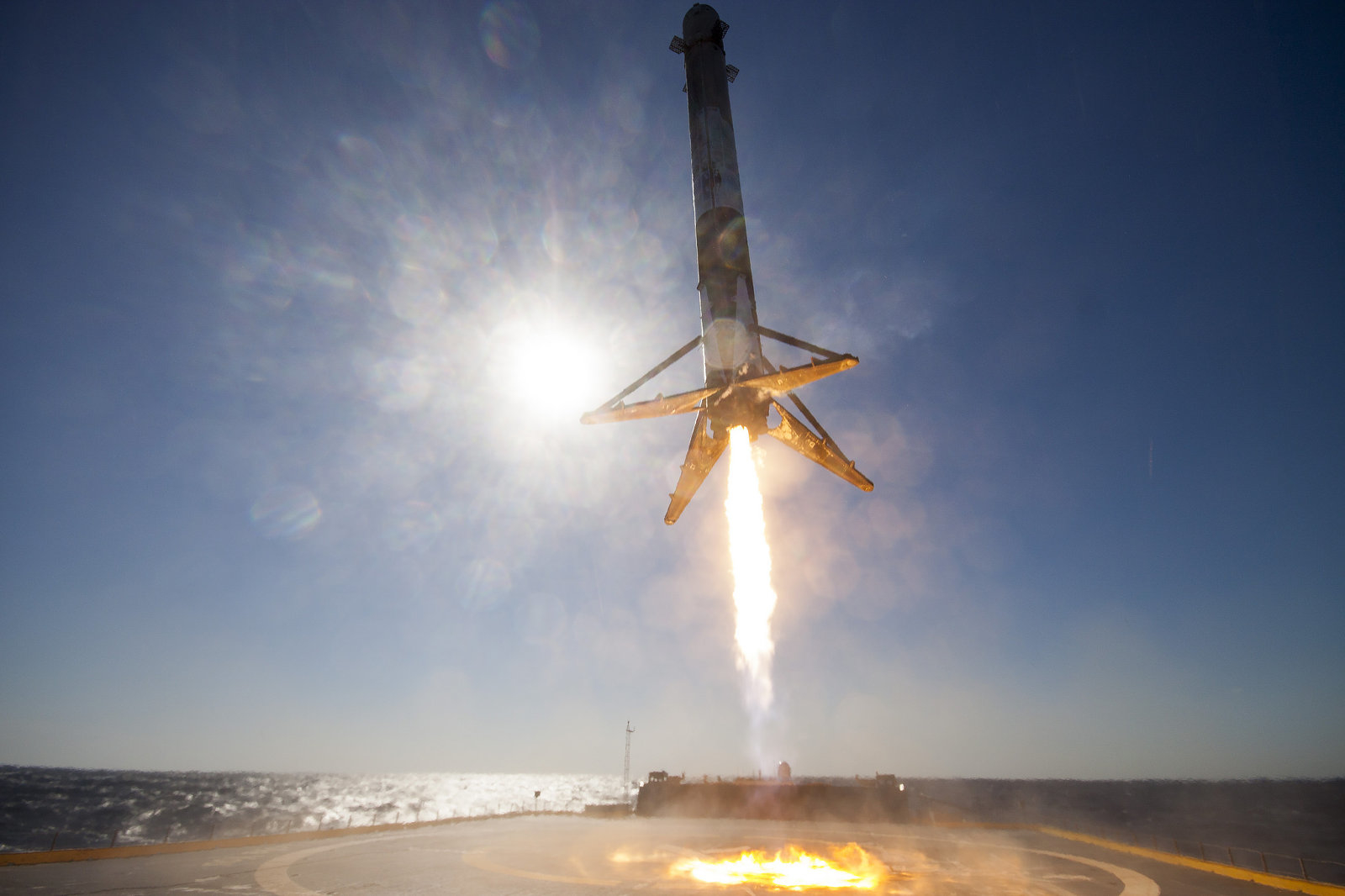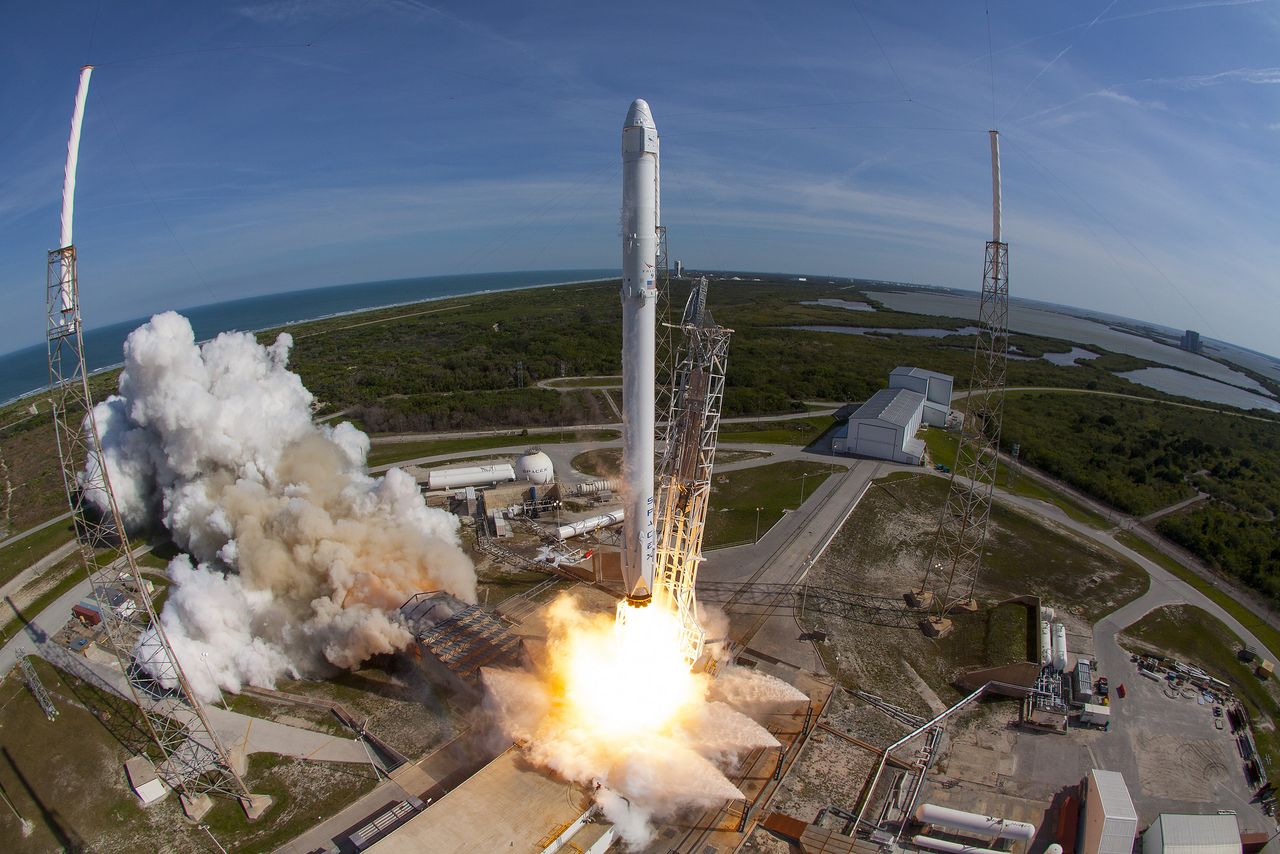Why restarting the first stage of the Falcon 9 by SpaceX is important

As it is known, SpaceX managed to launch and return the already used first stage of the Falcon 9 launch vehicle successfully. And this was not a test, but a full-fledged commercial launch of a rocket with expensive cargo on board. 9 minutes after launch, during which a communications satellite was launched into Earth's orbit, the stage gradually descended onto the floating platform. Unfortunately, the key point was not shown, but everyone can have technical overlays, nothing can be done about it.
At the same time, the news almost did not mention that the company managed not only to successfully put a satellite into orbit and return the rocket stage to Earth. There is one more achievement - SpaceX returned and the head fairing. It is reported that half of the fairing has returned to the Earth intact, but this is also a great achievement. “This is a great day. I, frankly, stunned. I was just speechless after everything that happened. Our talented team did a great job, ”said happy Ilon Musk after the return of all the elements of the rocket. Experts believe that all this is the beginning of a new stage in the development of astronautics.
By the way, the cost of the fairing is not so small, in the case of Falcon 9 it is about $ 6 million. During each launch of a conventional rocket fairing, both of its halves were separated from the carrier and fell to Earth after leaving the dense layers of the atmosphere. The mask seemed wasteful to lose $ 6 million, and he decided to try to return the fairing. Even if it was possible to plant only one half without damage, this is an achievement and at the same time a good saving. Soft landing for the fairing was achieved through the use of special guided parachutes and engines.
')
Before SpaceX, only Blue Origin and NASA could re-launch the elements of spacecraft returned to Earth. But in the case of the Jeff Bezos company, this is a space grasshopper, the New Shepard rocket, which is much smaller than the Falcon 9, and it does not go out into open space, but rises only 100 kilometers. The task of this rocket is to deliver tourists to a predetermined height, where they will stay for 4 minutes. After that, the rocket returns to Earth, where the capsule lands separately, and the stage of the carrier separately.

NASA, on the other hand, had “Shuttles”, but they also cannot be compared with Falcon 9 - neither the design nor the tasks, as they say, were near. NASA has implemented a project of reusable spacecraft for big money - many billions of US dollars. Service, launch, return to Earth "Shuttles" - all this is worth the annual budget for a relatively small country.
At the same Mask - invested $ 1 billion of the company's own funds and a number of investments. There are no tens of billions here to talk about. It seems that the latest success of SpaceX is already truly opening the era of commercial tourism, after which private companies will play an increasingly important role in the space industry. Of course, success did not come too suddenly. “It took us 15 years, a lot of time,” says Musk. “A lot of difficulties were encountered on the way. “But this is definitely a revolution in space flights.”
According to Bobby Brown, NASA's first chief technologist, after fifty years, people will look back and realize that commercial astronautics was born right now. Brown compared the successful flight of the Falcon 9 with the first successful commercial aircraft of the Boeing 707. This aircraft made the first commercial flight from New York to Paris in October 1958. A dozen years later, flights were carried out throughout the United States and the world, the rapid construction of airports, terminals, baggage compartments and everything that the aviation industry now composes began.

Brown notes the success of Blue Origin, but still this company is engaged in space (or rather, suborbital) tourism, and not full-fledged flights into space. To launch a rocket like the Falcon 9, you need 10 times more energy than launching a New Shepard.
It is clear that SpaceX has competitors. This is, for example, the same Boeing company. She, like SpaceX, has a contract with NASA, this company is also developing a launch vehicle. But so far it is to Mask that the merit of returning to Earth of the first stage of the launch vehicle is merit, which saves a significant amount of funds.
“The reuse of elements of the launch vehicle was a difficult task, but not at all impracticable. Now, in order to be competitive, I think other companies will start doing the same thing (develop returnable rocket stages, - ed.). Imagine if we were the only airline whose planes are reusable, and all other companies would be disposable. I mean, this is a completely non-competitive position, ”said Musk.

Now SpaceX experts say that the Falcon 9 rocket requires some refinement. In particular, the heat shield of the rocket needs to be improved. Musk hopes that the final version of Falcon 9 will be designed for multiple re-launches. According to the plan , by 2018 the first steps (and possibly the fairing) can be used up to 10 times. In the more distant future, Musk hopes to be able to use the same level up to 100 times, with the condition of repair after a certain number of launches.
Generally speaking, Musk sometimes makes promises that he cannot fulfill. True, this applies mainly to the timing of the projects of his companies. As for the goals set, they, although with a delay, are being fulfilled. And these goals are quite ambitious.
Source: https://habr.com/ru/post/402763/
All Articles